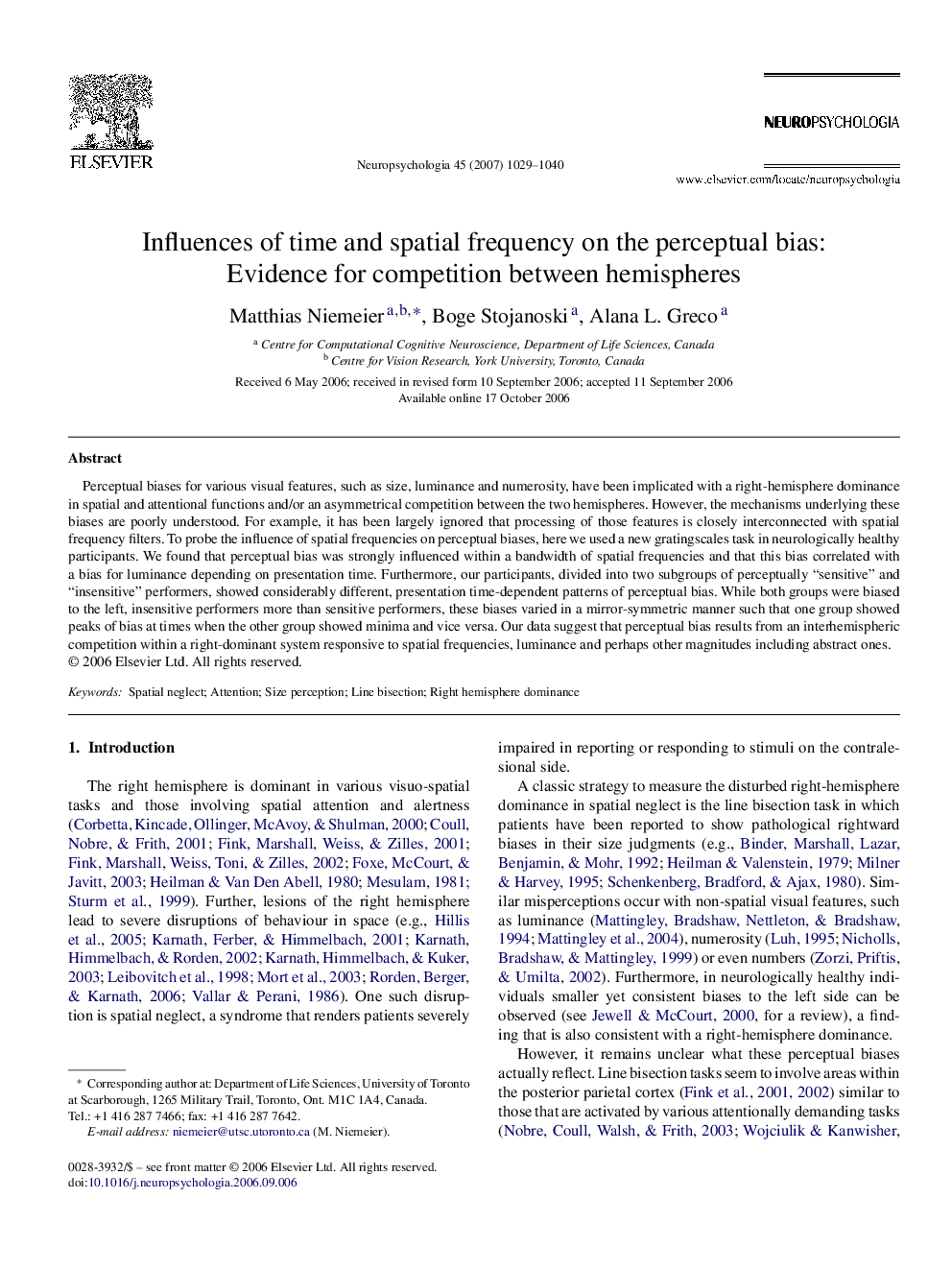| Article ID | Journal | Published Year | Pages | File Type |
|---|---|---|---|---|
| 10467012 | Neuropsychologia | 2007 | 12 Pages |
Abstract
Perceptual biases for various visual features, such as size, luminance and numerosity, have been implicated with a right-hemisphere dominance in spatial and attentional functions and/or an asymmetrical competition between the two hemispheres. However, the mechanisms underlying these biases are poorly understood. For example, it has been largely ignored that processing of those features is closely interconnected with spatial frequency filters. To probe the influence of spatial frequencies on perceptual biases, here we used a new gratingscales task in neurologically healthy participants. We found that perceptual bias was strongly influenced within a bandwidth of spatial frequencies and that this bias correlated with a bias for luminance depending on presentation time. Furthermore, our participants, divided into two subgroups of perceptually “sensitive” and “insensitive” performers, showed considerably different, presentation time-dependent patterns of perceptual bias. While both groups were biased to the left, insensitive performers more than sensitive performers, these biases varied in a mirror-symmetric manner such that one group showed peaks of bias at times when the other group showed minima and vice versa. Our data suggest that perceptual bias results from an interhemispheric competition within a right-dominant system responsive to spatial frequencies, luminance and perhaps other magnitudes including abstract ones.
Related Topics
Life Sciences
Neuroscience
Behavioral Neuroscience
Authors
Matthias Niemeier, Boge Stojanoski, Alana L. Greco,
